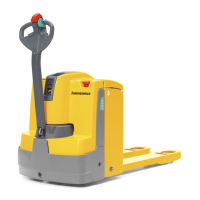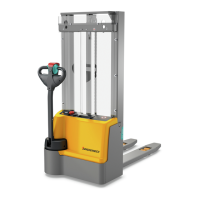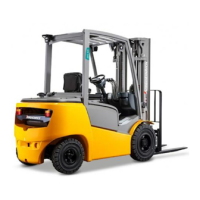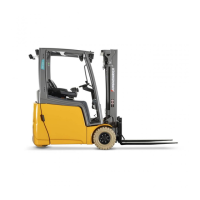141
08.11 EN
Check chassis and screw connections for damage. t
Check trailer coupling or tow mechanism stop. t
Check attachment and setting function of the driver's seat. t
Check operator mat and steps are non-slip and damage-free. t
Check engine compartment for contamination and clean if
necessary.
t
Hydraulic operations W A B C
Check settings and wear levels of slide pieces and stops and adjust
the slide pieces if necessary.
t
Visually inspect the mast rollers and check contact surface wear
level.
t
Check lateral clearance of the mast connections and the fork
carriage.
t
Check load chain setting and tension if necessary. t
Check forks or load handler for wear and damage. t
Check mast tilt. t
Test hydraulic system. t
Check that hydraulic ports, hose and pipe lines are secure, check for
leaks and damage.
t
Check cylinders and piston rods for damage and leaks, and make
sure they are secure.
t
Check hydraulic oil level and top up if necessary. t
Replace hydraulic oil filter. t
Check tilt cylinders and mounting. t
Replace hydraulic reservoir discharge paper filter. t
Test "hydraulic" controls and make sure the labels are present,
legible and complete.
t
Test lift and lowering speeds. t
Check piston rod screw depth and counter fixing / clamp.
Where two tilt cylinders with the same stroke length are used, check
the setting in respective of each other.
t
Test relief valve and adjust if necessary. t
Replace hydraulic oil. t
Check load chain lubrication and lubricate if necessary. t
Check running surfaces of the mast for wear and damage, and
lubricate if necessary.
t
Agreed performance levels W A B C
Lubricate truck according to the lubrication schedule. t
Demonstration after servicing. t
Carry out a test run with rated load, if necessary with a customer-
specific load.
t
Chassis and superstructure W A B C
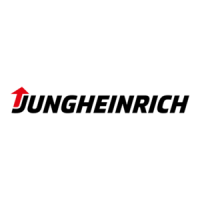
